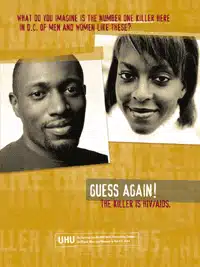4 Steps To A Winning Fundraising Case Statement



Writing a case statement? Trying to persuade prospects to make major gifts for a big project, like renovating a building or creating an endowment?
Here’s a formula that will always work:
1. Dramatize the problem.
2. Make the donor the hero whose gift will solve the problem. (How? By investing in your organization’s project.)
3. Build conviction. Catalog your real accomplishments, answer objections, back up any assertions you make with facts, introduce surprising news.
4. Oh, yes: Ask for the money.
Why use this particular formula?
Begin the story on your cover

1. Dramatize the problem. The UHU cover shows a young black man and women, attractive faces, looking readers straight in the eye. The headline above asks, “What do you imagine is the number one killer here in D.C. of men and women like these?” The answer: “Guess again! The killer is HIV/AIDS.”
2. Make the donor the hero. Inside, a chilling list of facts about the epidemic spread of HIV/AIDS in the D.C. area ends in this challenge: “Do you find these facts disturbing? Good. They are. Are you searching for a way to reduce HIV infection here in D.C.? Even better. Time to write a check!”
3. Build conviction. Out of eight pages, we devote almost half to listing all the fascinating and unique things UHU does to help reduce and eliminate HIV/AIDS. We make a big deal of their CDC funding. We include a timeline, showing the organization’s growth from volunteer-based to professionally staffed. We introduce readers to the UHU they DON’T know by first featuring something readers probably DO know: the condom kits that UHU distributes by the tens of thousands in D.C. nightclubs.
4. Ask for the money. “Time to write a check!” is only one of several pleas for cash sprinkled through the case.
You might be wondering: Why rely on a formula at all?
Because there’s a good chance you’re a bit rusty in the case statement department. In a busy year, I’ll write 10 case statements. Jerry Panas’ group out of Chicago creates 70 or more annually, he reports. But for most organizations, years will pass between one case statement and the next.
Of course, the REAL reason you use a proven formula? Because it saves time and money. Marketers learn early: Invent as little as possible — steal as much good stuff as you can. It’s just WAY more efficient.
This post originally appeared in the Ahern Donor Communications newsletter.

Comments